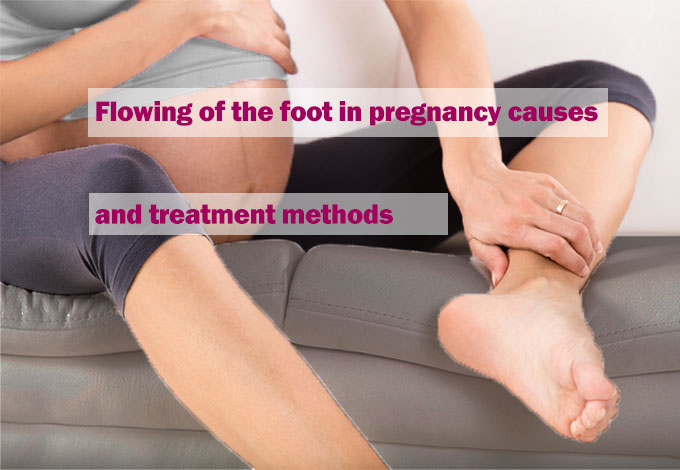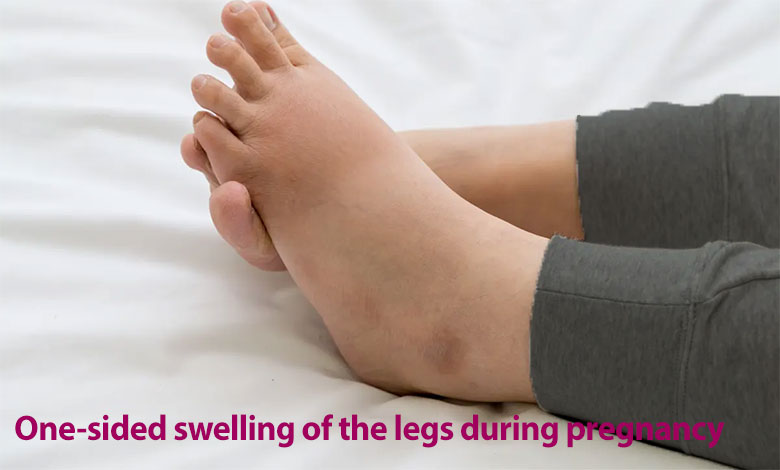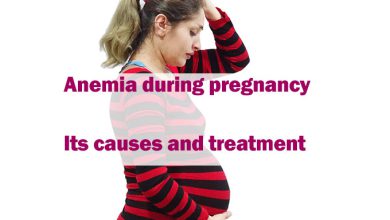Flowing of the foot in pregnancy causes, and treatment methods

The swelling of the foot in pregnancy is largely normal. This condition often gets worse at the end of the day and at the end of pregnancy. Swelling that develops gradually isn’t usually harmful to you or your baby, but it can be uncomfortable. However, a sudden increase in swelling can be a sign of preeclampsia, a condition that needs to be treated as soon as possible.
Related article: Anemia during pregnancy
The cause of swollen legs in pregnancy
Swelling is caused because your body retains more water than normal during pregnancy. During the day, excess water accumulates in the lower parts of the body, especially if it’s hot or you’ve been on your feet for a long time.
The pressure of the growing uterus can also affect blood flow in the legs, causing fluid to build up in the feet, ankles, and wrists. However, the orthopedic doctor usually considers these conditions to be normal.
At what month does swelling of the legs in pregnancy start?
The good news is that leg swelling usually occurs in late pregnancy. So your feet will likely look normal for the first half of your pregnancy or even longer. If not, visiting an ankle doctor can help.
the first three months
The rapid rise in the level of the hormone progesterone slows down your digestion. This can cause bloating long before the fetus makes a noticeable bulge on your body.
You may also notice swelling in your hands, feet, or face, but this swelling is not excessive. If you notice swelling during the first trimester, especially if it’s accompanied by other symptoms such as dizziness, headache, or bleeding, you should contact your gynecologist or ob-gyn.
second quarter ( second trimester )
The second trimester begins with the 14th week of pregnancy, approximately at the beginning of the 4th month. It’s not uncommon to see swollen feet around the fifth month of pregnancy, especially if you spend a lot of time on your feet or it’s hot.
This swelling is due to the increased volume of blood and fluid in your body. Your blood volume increases by 50% during pregnancy. In addition to this, other fluids also accumulate in your body to preserve and maintain the fetus.
While the ring and shoes may feel a little tight, this extra liquid will help soften your body and prepare you for childbirth. Rest assured, the excess fluid will quickly drain away in the days and weeks after your baby is born.
Third quarter
With the onset of the 28th week of pregnancy, the third trimester begins, which is the most common time to experience leg swelling during pregnancy. As you approach 40 weeks, your toes may feel like little sausages.
In addition to the fluid buildup, the uterus also becomes much heavier as the fetus grows, which can slow blood flow from the legs to the heart.
(Don’t worry, it’s not dangerous, it’s just uncomfortable.) However, if your foot hurts badly, you can visit a foot physical therapist, and if you don’t have enough time to see a doctor in person, seeing an orthopedic doctor online can be just as well useful.
Other factors that may contribute to leg swelling in the last month of pregnancy include:
- hot weather
- food imbalance
- Consumption of caffeine
- Not drinking enough water
Methods of pregnancy treatment at home
1- Reduce sodium consumption
A way to reduce swelling during pregnancy is to limit sodium( salt ) intake. Salt causes your body to retain excess water. Try to avoid canned or processed foods, as these foods are high in sodium. Also, try not to add extra salt to your food.
2- Increase your potassium intake
Not getting enough potassium can also worsen leg swelling during pregnancy. This is because potassium helps your body balance the amount of fluid it holds. Potatoes, bananas, kiwis, and tomatoes are rich in potassium.
3- Reduce caffeine intake
While the occasional caffeine isn’t harmful during pregnancy, drinking too much caffeine isn’t good for the fetus. It can also make leg swelling during pregnancy worse.
4- Drink more water
While it may seem strange to drink more water to combat leg swelling during pregnancy, the truth is that if your body thinks you’re dehydrated, it will retain more fluids to compensate.
5- Put your feet up and relax
Even if you have a lot of work to do before the baby is born, try to sit down and put your feet up at the end of the day. This will help move the fluids that have accumulated in your legs throughout the day.
6- Wear loose, comfortable clothes
Wearing tight-fitting clothing, especially around the wrists, waist, and ankles, can worsen swelling. The reason is that it prevents blood circulation.
7- Keep your body cool
Especially if you’re pregnant during the hot summer months, staying indoors during the heat of the day and avoiding vigorous exercise can help keep you cool and reduce leg swelling during pregnancy.
In addition to the above, the following also help:
- walking
- wear comfortable shoes
- Swim
- massage
- sleep on the left side

In addition to all this, the midwife can offer you more solutions to reduce leg swelling during this time.
Traditional medicine treatments for swollen legs during pregnancy
Gently walking, rubbing dill and vinegar on your feet, eating fast-digesting foods, massaging from heel to pelvis, and using cooked cabbage leaves on your feet are traditional medicine solutions to reduce leg swelling during pregnancy.
When is swelling of the legs dangerous during pregnancy?
If leg swelling during pregnancy is accompanied by the following conditions, it is dangerous and you may have preeclampsia:
- Sudden swelling of the hands, feet, face, or around the eyes
- Swelling that gets significantly worse
- Dizziness or blurred vision
- intense headache
- Abdominal pain, especially in the upper right side of the abdomen
- Confusion
- shortness of breath
One-sided swelling of the legs during pregnancy
If you notice leg swelling during pregnancy in only one leg accompanied by pain, redness, or warmth, it could mean that you have deep vein thrombosis (DVT). DVT is a blood clot that forms in the leg. If you have these conditions, contact an OB/GYN Online Consultation Physician right away.

How to reduce leg swelling in pregnancy?
There are some ways to reduce swelling in pregnancy :
- Avoid standing for a long period
- Wear comfortable shoes and socks
- Try to rest with your feet up as much as you can
- Drink plenty of water
- Try to get regular walks during the day or do foot exercises.
When should we see a doctor?
What do foot swelling in pregnancy mean?
How much leg swelling in pregnancy is normal?
Conclusion
The article “Flowing of the Foot in Pregnancy: Causes and Treatment Methods” discusses the common issue of foot swelling and pain experienced by pregnant women. The article explores the various causes of this condition, including changes in hormone levels, weight gain, and increased pressure on the feet. Additionally, the article provides information on the potential complications that can arise from untreated foot swelling, such as blood clots and varicose veins.
The article also covers various treatment methods for this condition, including exercise, elevation, compression stockings, and proper footwear. The author emphasizes the importance of early intervention to prevent more severe complications and improve the overall quality of life for pregnant women.
Overall, this article provides valuable information on a common issue experienced by pregnant women and offers practical solutions for managing foot swelling and pain during pregnancy. It highlights the importance of seeking medical attention if symptoms worsen or persist, and emphasizes the benefits of proactive measures to prevent complications.
